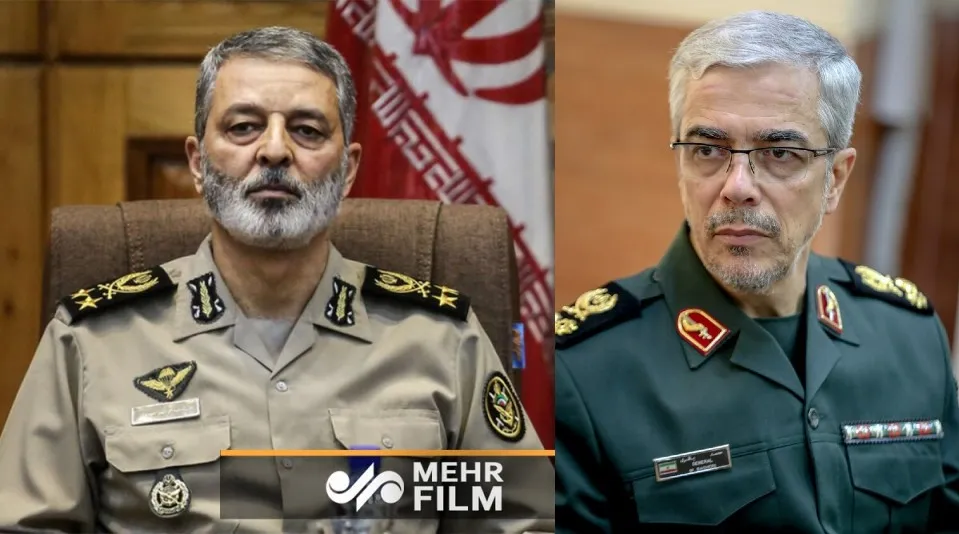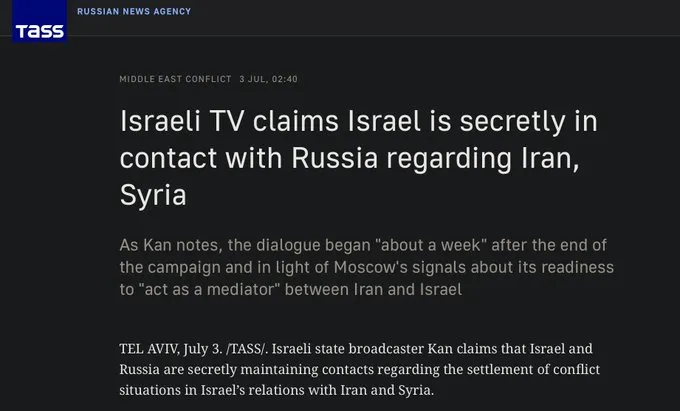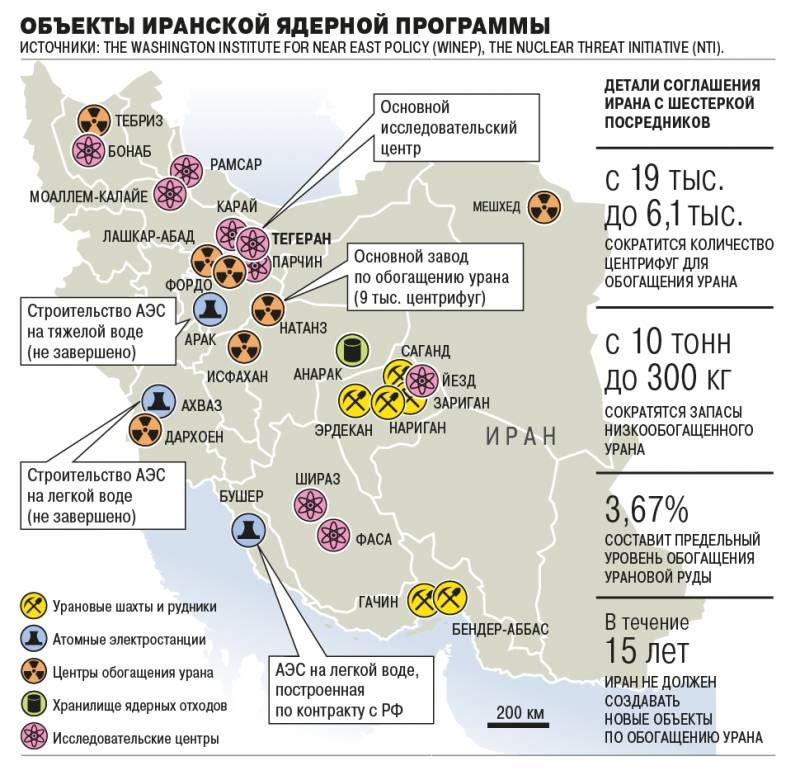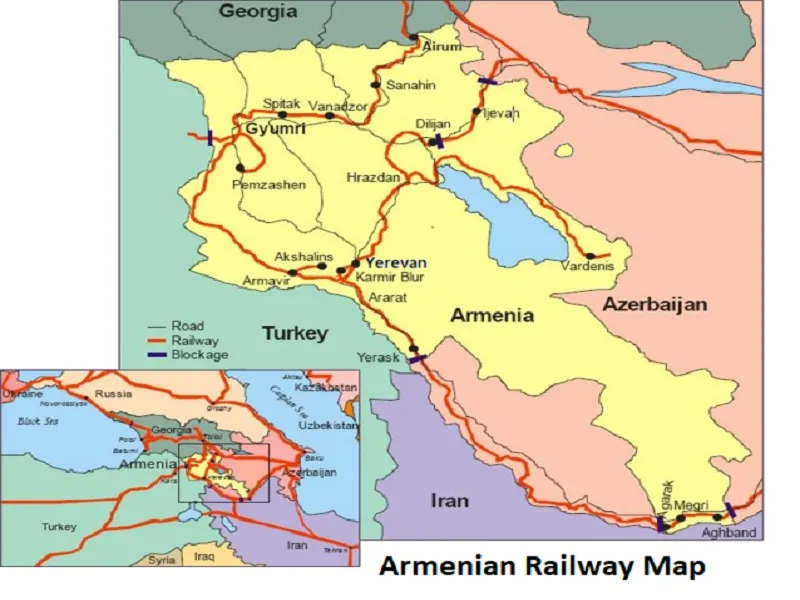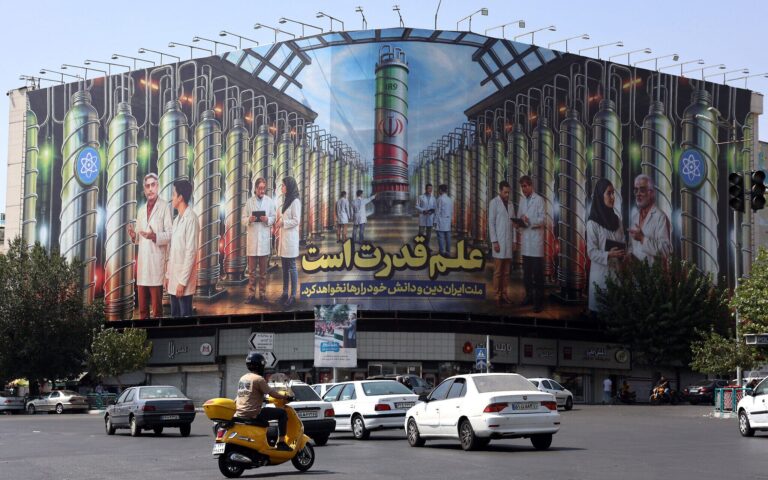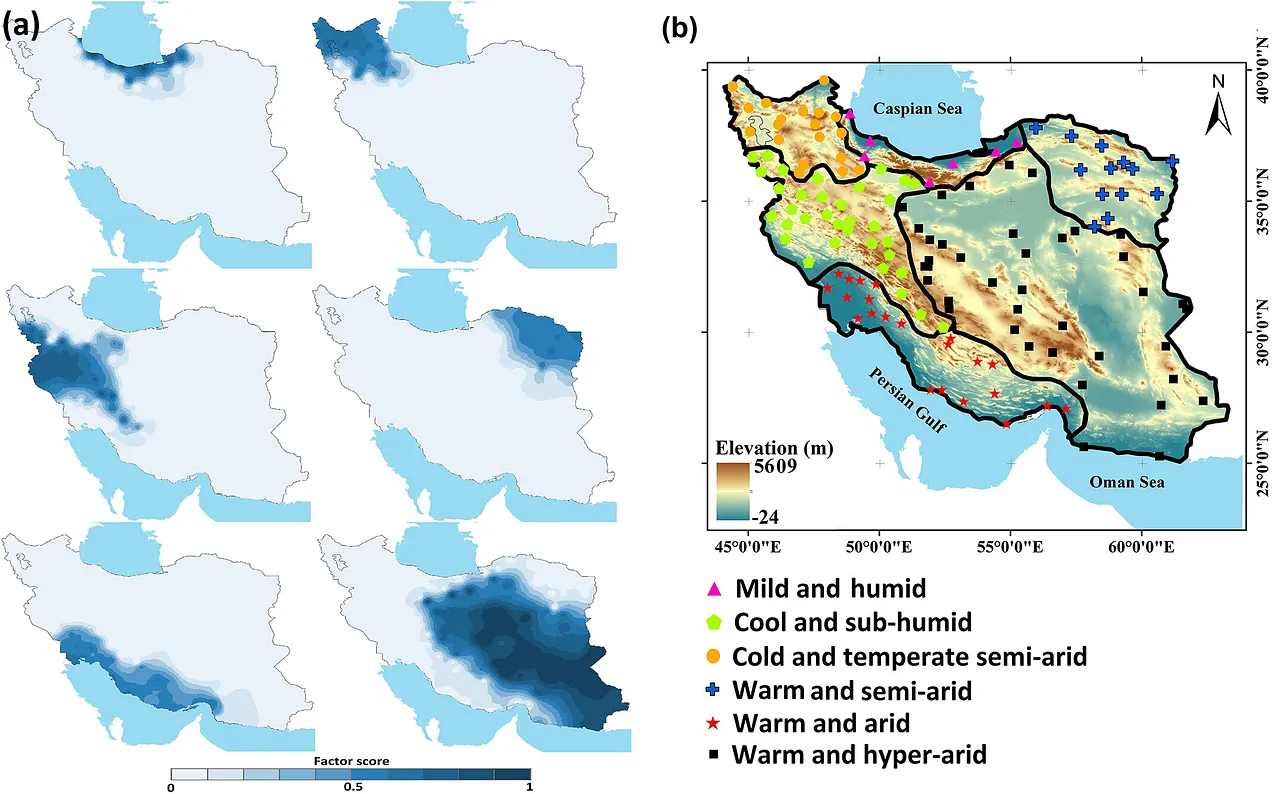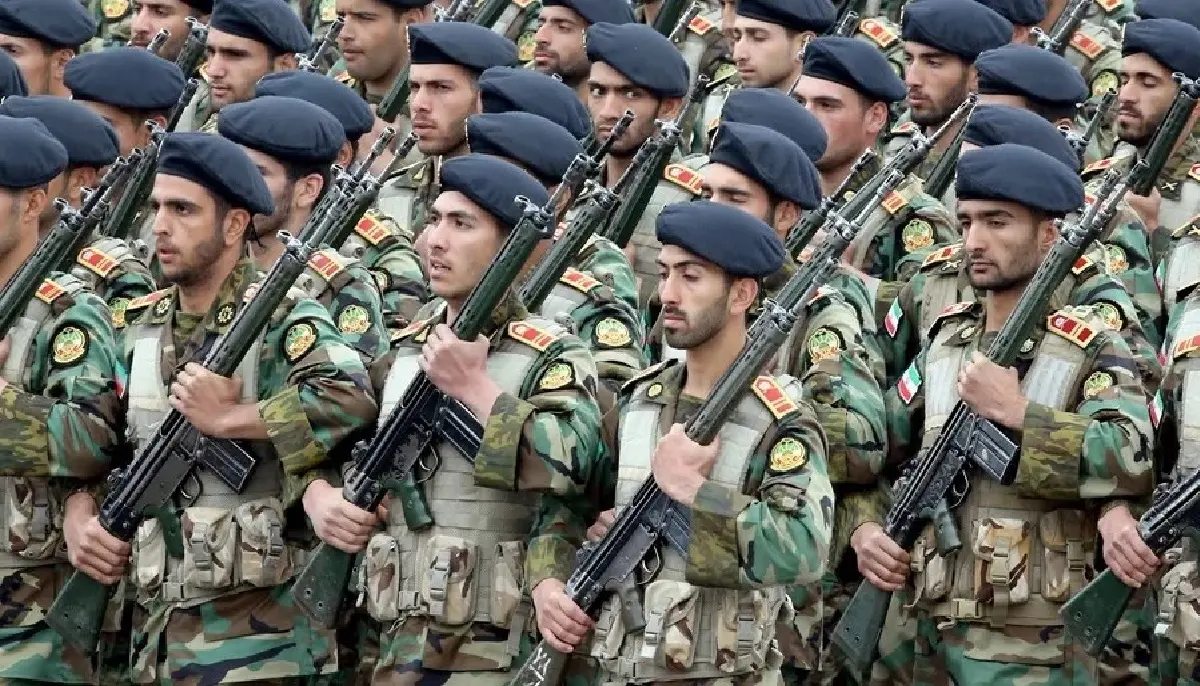Much is made of the US military base-encirclement of Iran and the threat it poses but considerably less attention is paid to Iran's Ring of Fire that threatens to engulf Washington and Tel Aviv
vanessa beeley and UK Column
Jul 05, 2025
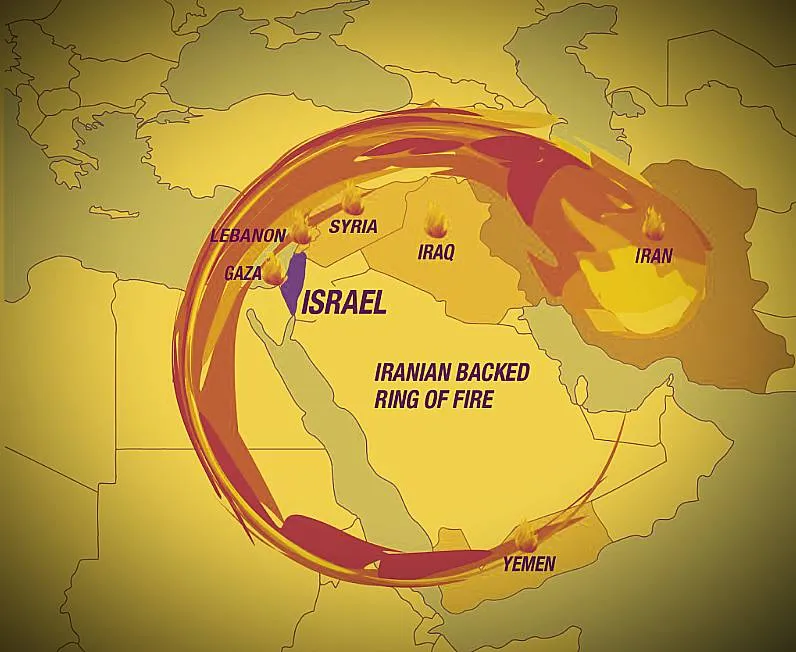
Did Iran Create or Cooperate with Regional Resistance?
Resistance to the Imperialist project in the West Asia (Middle East) region has deep historical and cultural roots for the people of the region. It was never exclusive to any religion; it was linked to an Arab identity and civilisation. The modern-day dominance of an Islamic Resistance is a phenomenon that is relatively recent and should not be seen through a sectarian lens, as it remains inclusive of all sects and ideologies. Religion and culture have historically encouraged a path to justice, defence of territorial integrity, regional identity, and human dignity. An early example is Queen Zenobia of Palmyra, Syria, who defied Roman occupation and resisted until her death.
As empires and social structure in the region evolved, the resistance evolved into a structure of state-led and popular movements. Various grassroots groups emerged, especially in Palestine, Syria, Lebanon, and Iraq. Initially, this was in response to the Sykes-Picot generation of British and French colonialism, and later to American and British-Zionist occupations. Non-state Resistance actors also grew out of the inability of some Arab nations to wage direct wars with the Zionist occupation forces for a multitude of reasons. The 1979 Islamic Revolution in Iran changed the status quo by legitimising resistance ideology and supporting these factions, enabling them to evolve and fortify their military capability.
In 1936, the Great Palestinian Revolt against British Mandate rule was brutally crushed. This paved the way for the 1948 Nakba, the ethnic cleansing of the Palestinians by British-trained Haganah terrorist forces. This led to the establishment of the so-called State of Israel on Palestinian land.
After Arab armies were unable to liberate Palestine in 1948, Palestinians and Arabs launched a number of Resistance initiatives which were on both sides of the political spectrum, both left-and right-wing. The most notable was Fatah, which began armed operations from Lebanon and Jordan in 1965. Others soon followed: the Popular Front, the Democratic Front, and the People’s Party, and later Islamic Jihad, Hamas, and various popular committees.
After Israel’s 1978 invasion of South Lebanon, new Lebanese resistance groups formed. These included the Lebanese National Resistance Front—a leftist coalition formed in 1982, led by the Lebanese Communist Party and the Organization for Communist Action—and the Shiite Amal Movement, founded in 1974. Hezbollah later emerged in the 1980s in response to the Zionist invasion of Lebanon in 1982 and the heinous Zionist-orchestrated massacre of Sabra and Shatila. The Zionists were driven out of Lebanese land by Hezbollah in 2000 and Hezbollah became the de facto political and military authority in the south. Hezbollah’s deployment was backed by Syria which, at the time, controlled politics and security in Lebanon with around 15,000 troops on the ground.
The 1979 Iranian Revolution led to Iran adopting a firm ideological stance against Western imperialism and proxy occupation forces in the region. As a result, Iran began supporting indigenous resistance movements, both directly and indirectly. These groups were never seen as ‘proxies’, but as allies, and support was not based on sect, but on their opposition to occupation. Iran supported the Palestinian Sunni Muslim Resistance factions without hesitation based on these principles.
The Resistance movements were formed organically in response to the brutality and tyranny of the occupying forces backed by the Western Imperialist bloc. Iran did not create them as some form of outreach for Iranian expansionism, as is often claimed by Western ‘think tanks’ and regimes.
Shared interests united the state and non-state actors across the region. This is a natural reaction to Western-dominated hegemony, resource piracy, and ethnic supremacy. These Resistance factions became key partners in what became to be known as the ‘Ring of Fire’, a defensive strategy for Iran and its allies, not a network of subordinates. Even in Iraq, resistance groups only emerged after the two US-led Gulf Wars, not before, when the Iraqi Saddam Hussein regime was persecuting Shia communities and going to war against Iran. These resistance groups further strengthened when battling Western-proxy ISIS, in Iraq, after the start of the regime change war against Syria in 2011.
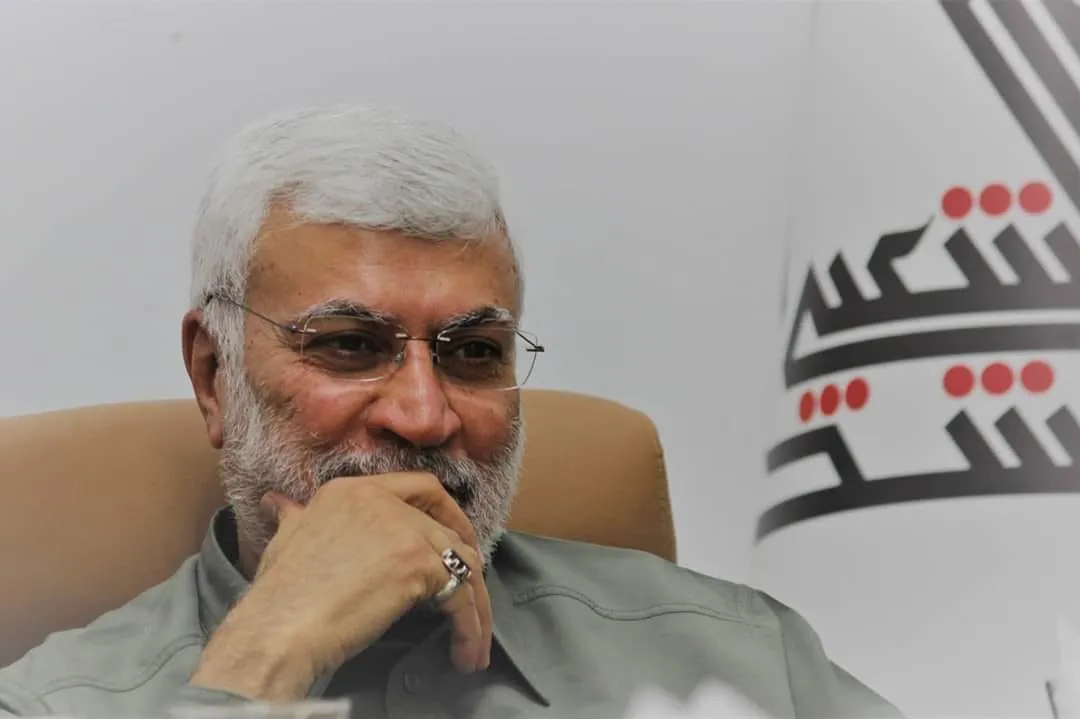
Meeting the legendary Abu Mahdi al-Muhandis in Iraq, November 2017. Photo Credit: Vanessa Beeley.
In November 2017, the author met with the former leader of the Iraqi Popular Mobilisation Forces (PMF), Abu Mahdi al-Mohandes, in Iraq, with a media delegation. In 2020, this visionary, an engineer by trade and a legendary commander, was assassinated alongside IRGC Commander Qassem Soleimani. It was a first step, by Donald Trump, to weaken Iran. During the meeting, al-Mohandes told us:
The US did not supply a single bullet to fight ISIS.
The US tanks had no ammunition. There were 12 Apache helicopters, whose only mission was to evacuate US diplomats from the green zone in the event of ISIS succeeding in entering Baghdad.
When the Sinjar Mountain massacre and abduction of thousands of Yazidi men took place in August 2014, the US planes did nothing against ISIS. Only Iran, according to Al Mohandes, stepped up and prevented an even greater bloodbath, allowing Hashed (PMF) forces to liberate 300,000 Yazidis.
This is a perfect example of why the Resistance is necessary: to prevent slaughter, occupation, and persecution by Western proxy forces in the region, Israel included.
Following are the major resistance movements and armed factions allied with Iran.
Lebanon
While the Amal Movement maintains a trained military wing and strong ties with Iran, Hezbollah stands as the most powerful and committed ally. Initially backed by Syria, Iran later took the lead in providing substantial financial, military, and political support, enabling Hezbollah to develop into a professional military force.
Hezbollah comprises two main branches: a political wing and a military wing. The political wing handles strategic direction, political engagement, and manages educational, healthcare, and social institutions to serve ALL Lebanese communities, regardless of sect or political affiliation. Hezbollah participates in elections, holds parliamentary seats, and plays an influential role in Lebanese politics. This, despite best efforts by the US and Israel to remove Hezbollah from the political scene in Lebanon.
The military wing is estimated to have over 100,000 fighters, potentially up to 150,000, according to some sources. It has a number of regional units. According to Zionist and Western think-tank research, Lebanon hosts five key regional units.
Nasr Unit: Operates in southern Lebanon, from the Israeli border to the Litani River.
Badr Unit: Covers the area from north of the Litani to Sidon.
Aziz Unit: Operates from southeastern Lebanon to western Beqaa.
Haider Unit: Active in central Beqaa, Baalbek, and Hermel.
Unnamed Unit: Located in Beirut’s southern suburbs.
Regional Operatives: Oversee theaters such as Syria and Palestine—Israel labels this ‘Unit 133’.
Functionally, Hezbollah’s structure includes:
Rocket Unit: Focused on improving missile accuracy.
Anti-Armor Unit: Specialises in destroying Israeli tanks; its effectiveness was notable during the 2006 war.
Artillery Unit: Handles mortars, self-propelled guns, and rocket launchers to support infantry operations.
Air Force Unit: Operates reconnaissance and combat drones.
Air Defence Unit: Defends Lebanese airspace against Israeli aircraft; a member shot down an Israeli ‘Yasur’ helicopter in 2006.
Armoured and Tank Unit: Formed during the regime change war against Syria, this unit saw extensive combat, from Qusayr to the Qalamoun battles.
Intervention and Special Forces – Radwan Unit: Known for elite offensive capabilities; key in the Syria war and tasked with capturing northern Israel in any future conflict.
Abbas Brigades: Similar in function to Radwan, specialising in offensive ground combat.
Naval Unit: Equipped with anti-ship missiles, speedboats, mini-submarines, and naval commandos. Credited with striking three Israeli naval vessels in 2006.
Cyber Unit: Engages in electronic warfare and cyber operations, often blamed for attacks on Israeli infrastructure.
Security Unit: Oversees internal and external intelligence and protects personnel and sites.
Training Unit: Manages educational curricula and military camps.
Operations Unit: Runs central and regional command centres. Equivalent to CENTCOM.
Planning and Research Unit: Develops strategic plans and studies.
Finance Unit: Manages military finances.
Logistics and Supply Unit: Provides vehicles, weapons, and logistical support in both war and peace.
Engineering Unit: Specialises in explosives, landmines, and ambushes—famous for the Al-Otaybah ambush.
Communications Unit: Runs Hezbollah’s wired and wireless network; its dismantling triggered the May 7 conflict with the Lebanese Government in 2008.
Combat Medical Unit: Provides frontline medical care.
War Media Unit: Handles media and psychological warfare and archives Hezbollah’s communications output.
Palestine
Palestinian resistance factions differ in ideology and strategy. Some, like Hamas and Islamic Jihad, adopt Islamic frameworks, while others, such as the Popular Front for the Liberation of Palestine (PFLP), follow Marxist-leftist doctrines. Most of the larger groups emphasise armed resistance, whereas factions like Fatah, particularly after the Oslo Accords, shifted toward political negotiation, eventually becoming adversarial to the resistance and taking administrative control of the West Bank, effectively an ally of the Zionist regime.
Despite longstanding internal divisions, Palestinian factions succeeded in forming a Joint Operations Room in 2006, which expanded by 2018 to include multiple factions under the name Joint Room of Palestinian Resistance Factions'. The iconic Commander Yahya Sinwar described it as "the nucleus of a liberation army and a model for unified action". Its military effectiveness became most evident following the October 7, 2023 operation.
Hamas
Hamas was founded in 1987 during the First Intifada. It is considered the most influential faction committed to armed resistance against Israel. Its military wing, the Izz al-Din al-Qassam Brigades, is among the most powerful in Palestine. Hamas is based primarily in Gaza but maintains a presence in the West Bank, especially in the beleaguered refugee camps, where its popularity has soared since October 7th.
On 7 October 2023, Hamas launched the Al-Aqsa Flood operation, a major military assault that stunned Israel and prompted responses from other factions and regional fronts. Structurally, Hamas resembles Hezbollah, featuring both political and military wings—though with smaller numbers and lighter armament. In response to the claims that ‘Israel created Hamas’, which is a reductionist argument at best and undermines the agency of Palestinian resistance at worst, there are a number of online articles and interviews available to challenge this popular narrative.
The Palestinian resistance arsenal ranges from short-range Qassam rockets (15 km) to R-160 (160 km) and Ayyash (250 km), which are originally Syrian-made and now locally produced. Hamas also possesses anti-tank guided weapons like the Kornet, Yasin rocket, Konkurs, North Korean Fagot (Phoenix), and Sagger missiles. It also has anti-aircraft systems (e.g., SAM-7) and reconnaissance and combat drones (e.g., Zouari drones).
Hamas maintains over 50,000 fighters, organized into regional brigades and battalions, each led by a local commander:
North Gaza Brigade: 7 combat battalions, including an elite unit
Gaza Brigade: 7 combat battalions (merged sectors)
Central Brigade: 5 combat battalions, with elite units
Khan Younis Brigade: 6 combat battalions, including elite units
Rafah Brigade: 5 battalions, including elite units
Each brigade includes specialised units:
Commando (Elite) Unit: Highly trained for special operations, supported by intelligence and numbering around 5,000 fighters.
Anti-Armor Unit: Targets Israeli tanks and APCs using RPG-7, Kornet, Yasin-105, and Shuwaz series IEDs. Credited with destroying Merkava tanks and Namer vehicles.
Signals Unit: Manages all communication—wired and wireless—and built a secure wired network for battlefield and tunnel use. This network was a target in Israel's failed Operation Sword's Edge, during which commander Nour al-Din Baraka was martyred.
Other specialised units include:
Engineering
Air Defence
Artillery
Snipers
Martyrdom Operations
Support
Recruitment and Morale
Manufacturing
Ambush
Rocket
Cyber
Drone Warfare
In 2014, Hamas revealed its naval commando (frogmen) unit during the Gaza conflict. In 2016, it announced a ‘Shadow Unit’ responsible for guarding captured enemy soldiers. During the 2023 Al-Aqsa Flood operation, it unveiled the ‘Falcon Squadron’ of its airborne elite military brigade.
Islamic Jihad
Founded in October 1981, Palestinian Islamic Jihad (PIJ) emerged from the same ideological roots as Hamas, but it evolved independently. It remains committed to armed struggle as the sole path to liberation. Its military wing, the Al-Quds Brigades, operates primarily in Gaza, but also maintains an active presence in the West Bank, especially in areas like Jenin and Hebron.
The Al-Quds Brigades are among the largest and most developed military factions in Palestine. They have advanced their domestically produced weapons systems, including:
Short-range rockets: Quds, Fajr, and Buraq variants with ranges up to 120 km
Reconnaissance and attack drones: notably the Jenin model
Multiple rocket launchers and rapid-fire systems
The group's operations span Gaza, the West Bank, parts of Israel, and even southern Lebanon. It commands an estimated 30,000 fighters, distributed across its various operational areas.
Al-Aqsa Martyrs Brigades
Although Fatah officially abandoned armed resistance, especially after Mahmoud Abbas took leadership and dissolved its military wing, the Al-Aqsa Martyrs Brigades re-emerged in 2021. This followed the Battle of Sword of Jerusalem and tensions in Sheikh Jarrah, marking a resurgence after 16 years of demilitarisation in the West Bank.
The revitalised brigades absorbed several affiliated groups, including:
Nidal al-Amoudi Brigade
Army of the Storm
Martyr Ayman Judeh Group
Abdul Qader al-Husseini Battalions
They have since played a notable role in Gaza-based military confrontations.
Other Armed Factions Aligned with Iran or Independent
Several other groups remain active in Palestine, maintaining distinct ideological and military structures. These include:
Popular Resistance Committees; armed wing: Al-Nasser Salah al-Din Brigades
Democratic Front for the Liberation of Palestine; military wing: National Resistance Brigades
Popular Front for the Liberation of Palestine; military wing: Abu Ali Mustafa Brigades
PFLP – General Command; military wing: Jihad Jibril Brigades
Palestinian Freedom Movement; military wing: Ansar Brigades
Palestinian Mujahideen Movement (a Fatah offshoot); military wing: Mujahideen Brigades
Yemen
The Yemeni Army and Popular Committees
The official Yemeni Army consists of four main branches: Ground Forces, Air and Air Defence Forces, Naval and Coastal Defence Forces, and Border Guard Forces, in addition to Strategic Reserve Forces, which include Special Operations, Presidential Guard, and Missile Brigades. The total personnel is estimated at around 80,000. Its military assets include:
11 mechanized infantry brigades
14 armoured brigades
10 air defence brigades
2 naval brigades
6 missile and artillery brigades
8 aviation brigades
30 infantry brigades
Along with 3 naval bases, air police brigades, and radar units
In early 2015, the Saudi-led coalition, supported by the US, UAE, and other Arab and Western nations, launched a war on Yemen under the name ‘Operation Decisive Storm’. The Yemeni Army, alongside the Popular Committees which are tribal militias, historically aligned with the army against foreign intervention, resisted this campaign. Brigadier General Yahya Saree serves as the official spokesperson of the Yemeni Armed Forces.
Ansar Allah: Known in Western Media as the ‘Houthis’
The story of Ansar Allah is long and shaped by six wars with President Ali Abdullah Saleh’s forces in Yemen. Ansar Allah have been historically opposed to Saudi, US, Western, and Israeli influence. They later engaged in one of the most brutal modern wars against the Saudi-led coalition, which aimed to dismantle the movement. Instead, Ansar Allah turned adversity, blockades and immense hardship into momentum. Their support base expanded, their military industry developed, and their ideological commitment hardened, earning them a reputation as barefoot fighters defeating a coalition of regional powers.
You can read a number of articles about the unlawful war of aggression against the Yemeni people here, here, here, and here. An excellent book by Dr. Isa Blumi called Destroying Yemen is also recommended.
Structurally, Ansar Allah resembles Hezbollah but with distinct local adaptations. They have a full political wing and a military apparatus organised into brigades and specialised combat units. This foundation positions them as potential future rulers of Yemen, a prospect that alarms Gulf, Zionist and Western powers. Though exact numbers are unknown, estimates suggest a minimum of 500,000 fighters, many of whom are highly trained. Local footage shows commando forces modelled on Hezbollah’s Radwan Unit.
Their most significant capability is their missile arsenal and indigenous missile development program. These include cruise, ballistic, and hypersonic systems. Ranges vary from the 70 km Tochka to the Toufan, which reaches 2,000 km with an 800 kg warhead. The latter was used against Israel, successfully evading the multiple layers of US and Israeli air defences. Trump recently let it slip that Yemen produced its own missiles, which contradicts the oft-repeated line that Yemen is an Iranian ‘proxy’ dependent upon Iran for its missile stocks.
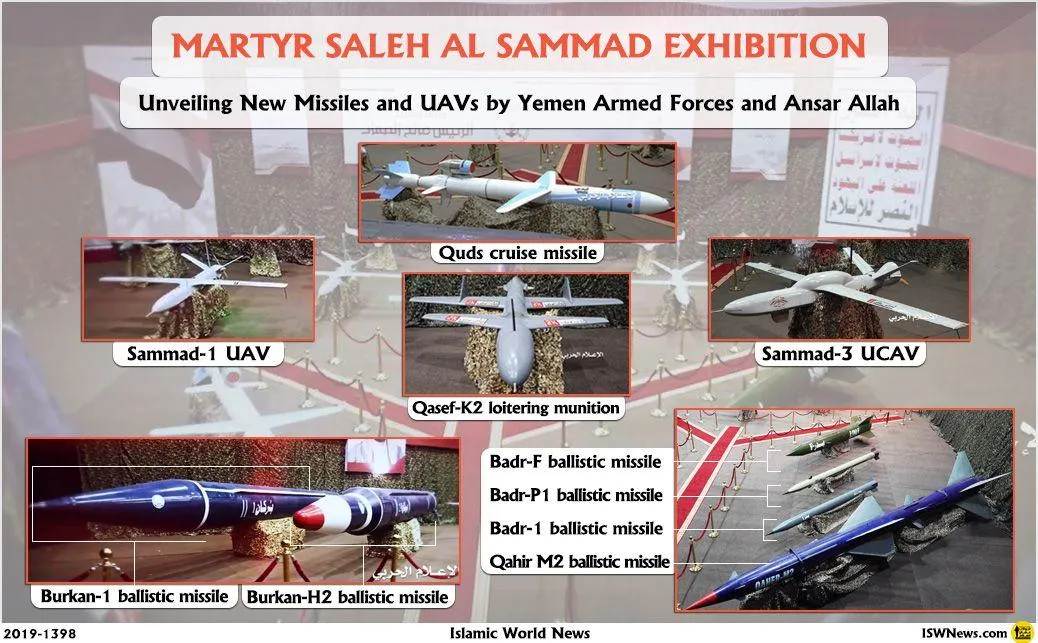
Ansar Allah also deploy a wide range of drones, from reconnaissance to attack and loitering munitions. The Samad series has operational ranges from 150 to 2,500 km.
Their naval forces are among their most strategic assets. They possess fast attack boats such as Asif, Malah, and Nadheer. These are capable of launching 107 mm Katyusha rockets and carrying medium to light weapons, with some equipped with air defence systems. They also operate extremely effective unmanned surface vehicle (USV) boats for combat and maritime surveillance.
The group has publicly declared possession of various naval mines, including the Masjour, Thaqib, Karrar, and Mujahid types. These underwater explosives are designed to damage or destroy surface vessels or submarines. Each model varies in activation method and depth tolerance.
Ansar Allah also possess Rubezh missiles, a Russian-made coastal defence system that uses Kh-35UI anti-ship missiles with a 260 km range. These sea-skimming missiles fly close to the water surface to evade radar, carrying a 145 kg high-explosive warhead designed to penetrate a ship's hull before detonating.
The group has also developed its own anti-ship missiles, such as Tankeel, Hatim, Faleq, and Sayyad; they are cruise missiles guided by radar or infrared seekers with ranges between 200–400 km, closely resembling Iranian designs. Additionally, their Quds-4 ground-attack cruise missile is capable of engaging land and sea targets at up to 800 km, based on Iranian-developed technology transferred to Yemen.
Ansar Allah's Air Defence
Ansar Allah have demonstrated remarkable air defence capabilities by shooting down multiple U.S. drones in recent years. Among them was the MQ-9 Reaper, a long-endurance strike drone capable of flying 27 hours at over 15 km altitude.
They repurposed Russian air-to-air missiles, such as the AA-10 Alamo-B and AA-11, converting them into surface-to-air missiles. The AA-10, originally designed for 4th generation Russian fighters like the MiG-29 and Su-35, became one of Ansar Allah’s most used systems since 2017. It is very effective against aircraft, helicopters, cruise missiles, and drones, and was deployed in ambushes deep inside Yemen’s mountainous terrain to intercept low-altitude targets.
The Wa’id drone, with a range of 2,500 km, is an example of long-range loitering munitions, designed to overwhelm enemy defences with coordinated salvos of five or more drones.
Although Iran provided the foundational technology, as it did with Hezbollah, Ansar Allah have localised production in mountain-based facilities. Their advanced missiles are manoeuvrable and semi-stealth, increasing the likelihood of striking targets despite not being pinpoint accurate. From a cost-benefit standpoint, the loss of a few drones or missiles is negligible compared to the potential damage inflicted on Israeli or U.S. warships.
Iraq
Iraq hosts a diverse set of armed factions with substantial military and political influence. These include Iran-backed Shiite groups, former anti-ISIS militias, anti-US resistance forces, and armed Sunni and Kurdish groups. The most prominent among them are organised under the Popular Mobilisation Forces (PMF), a state-sanctioned umbrella formed in 2014 to fight ISIS.
1. Asa’ib Ahl al-Haq (AAH)
Fighters: 10,000–15,000
Armament: Medium to heavy weapons and ballistic missiles
Leader: Qais al-Khazali
Influence: Strong in Baghdad, Basra, Dhi Qar, and Muthanna
Political arm: Fatah Alliance
2. Kata’ib Hezbollah (KH)
Fighters: 5,000–10,000
Armament: Drones andprecision missiles
Leader: Abu Ali al-Askari (succeeded Abu Mahdi al-Muhandis, who was killed in 2020)
Influence: Baghdad, Diyala, and the Syria border
3. Saraya al-Salam (formerly Mahdi Army)
Fighters: 5,000–8,000
Leader: Muqtada al-Sadr
Influence: Sadr City (Baghdad), Najaf, and Diwaniyah
4. Harakat al-Nujaba
Fighters: 3,000–5,000
Armament: Advanced missiles, intel units
Leader: Akram al-Kaabi
Influence: Baghdad, Karbala, Anbar
Formed the Golan Liberation Brigade during its presence in Syria (estimated 3,000 fighters), but the collapse of Damascus halted its activity.
5. Kata’ib Sayyid al-Shuhada
Fighters: 2,000–4,000
Leader: Abu Alaa al-Walae
Active in Baghdad and Diyala.
6. Badr Organization (formerly Badr Corps)
Fighters: 10,000+
Leader: Hadi al-Amiri
Political wing: Part of the Fatah Alliance
Influence: Baghdad, Basra, and Diyala
7. Saraya al-Khorasani
Fighters: 1,000–3,000
Operates under PMF
Following the assassinations of Commanders Abu Mahdi al-Muhandis and Qassem Soleimani in 2020, ordered by President Trump, new anti-colonialist resistance factions emerged, targeting American forces and interests. Though smaller, they play an active role in drone and missile attacks, particularly after the Palestinian Al-Aqsa Flood operation. They launched strikes from Iraq and inside Syria against US and Israeli targets, serving as a regional support front.
These groups include Kata’ib Hezbollah Iraq, Islamic Resistance Squadrons, Wa’ad al-Sadiq Corps, Muhammad Baqir al-Sadr Forces, Imam Hussein Brigade, Zulfiqar Brigade, Qassem al-Jabareen Resistance, Ashab al-Kahf Resistance, Saraya Awliya al-Dam, International Resistance Faction, Second 20th Revolution Brigades, Usbat al-Thaireen, Ulul Azm Group, Sabiqun Battalion, Khaybar Brigade, Thaer al-Muhandis Group, Abu al-Fadl al-Abbas Forces, Saraya al-Muntaqim, Martyr Karim Darham Group, Montaqimoun Brigade, and Thaireen Brigade.
In 2021 alone, these groups carried out an estimated 262 attacks on US forces or logistics convoys in Iraq, using IEDs.
Also active is the Tribal PMF, a Sunni-aligned pro-government force. This faction is large, but it lacks organisation and operates mainly in Anbar and Salah al-Din Provinces alongside the regular Iraqi Army.
In summary, Iran-backed Shiite groups remain the most powerful, while Christian, Sunni and Kurdish factions maintain influence in their respective regions.
Afghanistan
Hezbollah Afghanistan
Hezbollah Afghanistan is a Shiite political party established in 1980 as part of the ‘Tehran Eight’, which is a coalition of Iran-allied Afghan resistance groups. It fought against Soviet and Afghan government forces during the Soviet-Afghan war (1979–1989). It became a legal political party in 2005 and developed close ties with Liwa Fatemiyoun, an Iran-linked Afghan militia.
Though it shares a name, Hezbollah Afghanistan has no direct link to Lebanon’s Hezbollah, apart from both being aligned with Iran. It remains active in Afghan politics, advocating for Shiite interests. Some researchers argue Hezbollah Afghanistan and Liwa Fatemiyoun have merged; others see them as separate but cooperative entities.
Liwa Fatemiyoun
Liwa Fatemiyoun is a Shiite Afghan militia founded in 2014 by Ali Reza Tavasoli (Abu Hamed) to fight ISIS. It is funded, trained, and directed by Iran’s Islamic Revolutionary Guard Corps (IRGC). Tavasoli died fighting the Western-Al-Qaeda-assets in southern Syria, 2015.
Estimates place the group’s strength at around 14,000 fighters, as stated by deputy commander Sayyed Hassan Hosseini (‘Sayyed Hakim’). The group fought in Syria, specifically Deir ez-Zor and Al-Bukamal in late 2017, as part of a joint Iran-Syria-Russia campaign against ISIS, a Western asset, in eastern Syria. This was one occasion when Syria-aligned forces collaborated with the US-backed Kurdish militia gathered on the opposite bank of the Euphrates River.
Liwa Fatemiyoun uses light to medium weaponry including rifles, sniper systems, 23mm cannons, RPGs, and anti-tank guided missiles.
Pakistan
Liwa Zainabiyoun
This is a Pakistani Shiite militia comprising recruits from Parachinar and Khyber Pakhtunkhwa, with some of Baloch origin. Initially, they were deployed to Syria in 2013 to defend the Sayyida Zaynab shrine, now under attack by the Al Qaeda Jolani regime (Ahmed Al Sharaa). Originally they were associated with Liwa Fatemiyoun, but later formed their own splinter unit.
Liwa Zainabiyoun now has around 5,000 fighters, with experience in Damascus, Daraa, Latakia, and Aleppo, playing a crucial role in several key battles. The group is universally respected for its professional combat skills.
Additional Cross-Border Factions
Iraqi resistance groups have extended support to other emerging resistance movements:
Islamic Resistance in Jordan: Reportedly includes members from the Muslim Brotherhood.
Islamic Resistance in the Arabian Peninsula: Composed of Hijaz (Saudi) Shiites from the Qatif region.
Saraya al-Ashtar in Bahrain: Known as the Islamic Resistance in Bahrain.
While little information is available, all three have claimed responsibility for drone attacks on Israeli military sites in 2024. All three are challengers to sectarian tyranny in their respective countries and are steadfast supporters of the Palestinian cause.
Syria
Southern Syria Resistance Units
Following the 2006 Lebanon War, the Syrian Government, working with Hezbollah, established Resistance cells along the occupied Golan Heights. Syrian intelligence oversaw recruitment. The Syrian Arab Army provided training facilities, and Hezbollah handled combat preparation.
Estimates place these forces at 20,000–30,000 fighters, mostly Syrian locals. Their intended mission was, eventually, to storm the Zionist-occupied Golan in coordination with Hezbollah’s Radwan Unit. The plan, initially planned for 2013–2015, was shelved due to the US/UK-led regime change war against Syria launched in 2011.
After the fall of the Syrian Government on 8 December 2024, the fate of these fighters remains unknown. Most likely, some relocated to southern Lebanon, while others remain hidden in Daraa, Quneitra, and Suwayda in southern Syria.
In addition, an estimated 60-80,000 Syrian Army officers and soldiers escaped to Iraq. These were experienced combatants previously stationed in the Syrian desert to fight ISIS. A further large number of SAA are now in Lebanon.
Conclusion: Can Iran Rely on the ‘Ring of Fire’?
Below is a map from the Council on Foreign Relations (CFR) of US bases threatening Iran's borders.

While much is made about the fact that US military bases are circling Iran with hostile intent, little is said about the Iran-aligned ‘Ring of Fire’ that effectively surrounds the US bases in the region. This came to light during the most recent Zionist aggression against Iran, when we saw the commitment of these Resistance groups to the defence of Iran and antipathy to the US military occupation of the region. These groups closed ranks in the war against the ‘arrogant powers’ very quickly, threatening US allied hegemony in the region.
Assessing the power and influence of these Resistance groups requires an understanding of both their strength and the factors shaping their decisions. A key strength lies in their adaptability and ability to evolve under political and logistical constraints.
Some groups, however, are limited by domestic political dynamics. Hezbollah in Lebanon, despite possessing over 150,000 rockets, many of them precision-guided and within close range of Israel (reducing the Iron Dome’s reaction time), cannot launch an open war without precise political calculations. Many Lebanese, including pro-Western factions, oppose such action and would blame Hezbollah for dragging Lebanon into war—an outcome Israel and the US actively encourage.
The Iraqi Popular Mobilization Forces (PMF) face similar restrictions in a country divided by competing political agendas. Even Liwa Fatemiyoun and Liwa Zainabiyoun, active in Afghanistan and Pakistan, are limited in numbers and do not have the majority of popular support in their respective countries.
Nonetheless, despite the collapse of Syria as the backbone of the Resistance Axis, previously Iran’s key strategic ally, and heavy losses suffered by Hezbollah and Palestinian groups, the ‘Ring of Fire’ remains operational and potent. Estimates suggest:
Palestinian factions: at least 50,000 short-range rockets
Hezbollah: at least 100,000 short-to-mid-range rockets
Iraqi factions: around 100,000 rockets
Yemen: approximately 150,000 rockets
Iran itself: at least 300,000 missiles of various types
In total, Zionist and American bases in the region are surrounded by a conservative estimate of 700,000 rockets, including ballistic and hypersonic missiles, already proven effective and accurate in recent conflicts. Iran is a producer of these missiles on an industrial scale. Yemen has a successful missile production capability, and even Hezbollah is not entirely reliant upon Iran for the manufacture of weapons.
Yemen may now represent the most significant strategic force in this equation, thanks to its powerful arsenal, difficult terrain making ground invasion nearly impossible, and control over the Bab al-Mandeb Strait in the Red Sea.
Yemen's impact became undeniable following Trump’s fumbled ceasefire agreement which he sold as a Yemeni surrender but which was, in reality, a capitulation from the US after $1 billion in military expenditure on a failed military mission to ‘destroy the Houthis’.
What Ansar Allah achieved wasn't only a tactical success; it also marked a strategic global power shift and a major slap in the face of American military doctrine and marketed supremacy.
Perhaps the most important element in the long war against Iran is the recent potential for a Jihad ‘Fatwa’ spoken about by prominent Islamic scholars, against the US and the Zionist regimes. This is from Enemy Watch on Telegram:
Currently, the situation has evolved such that three prominent authorities in the Shia world, each in their own way, have warned about the potential issuance of a jihad fatwa against the United States and the Zionist regime.
Ayatollah Seyyed Ali Sistani, in response to threats from the US and Israel, warned that if the assault on the Marja’iyya (religious authority) and Leader of the Ummah (Imam Khamenei) continues, inevitably a jihad fatwa will be issued.
The history of Shia jurisprudence shows that whenever the Marja’iyya has been threatened, a fatwa was issued and the Ummah rose up. From the Tobacco Protest to resistance against ISIS, from the Constitutional Revolution to the occupation of Iraq, the Marja’iyya has never remained silent.
The battle lines have been drawn. Iran’s ‘Ring of Fire’ remains active and powerful despite recent losses across the region, particularly in Syria. It still poses an imminent and serious challenge to US and Zionist dominance and expansionism in the region, and above all, it is an unassailable barrier against the long-term agenda to destroy Iran and impose a Zionist-friendly regime in the country.
https://beeley.substack.com/p/iran-and- ... dium=email
******
The End Game in Iran also means the demise of Trump’s credibility around the world
Martin Jay
July 4, 2025
The Iranians have been fooled more than once in recent years and now they can’t be fooled again.
The recent news which floated to the top of the media cesspit in the UK that BBC journalists had been compromised by Israel shouldn’t have surprised anyone. It was really a ‘dead donkey’ story which many of us could have guessed. But it does remind us that Israel’s cash and political influence is not limited to the U.S. but has permeated all levels of British society including media. The recent outrage of the BBC filming a rapper at Glastonbury open air pop concert who chanted ‘death to IDF soldiers’ got a disproportionate amount of coverage to the actual genocide in Gaza on the same day by about a million to one. The chanting was vulgar but the point most pundits missed, regardless of where they stood on Israel’s daily holocaust in Gaza, was that Bob Vylan shouldn’t have had to go as far as he did if the coverage of the genocide was even vaguely fair. Of course, it isn’t. It is absurdly tipped in favour of Israel which creates a ground swell of ignorance from the average white van man in the UK who doesn’t really understand anything about international politics but who needs to align himself with a narrative. That ignorance leads to the ‘Israel has the right to defend itself’ narrative having no caveats or nuances being attached to it as we have left the free speech zone a long time ago. People don’t get that free speech is ugly. If you believe in free speech this is the first barb you have to deal with.
And so, the comfort zone of ‘controlled speech’ is what we have signed up to. We have stopped questioning our politicians and media. We allow Israel to block journalists entering Gaza on the hilarious assertion that it’s for their own safety when IDF soldiers use journalists for target practice (regardless of who they seem to be embedded with); our media continues to be controlled by the IDF media machine to such an extent that when the big screen explanations are given about the recent Israel-Iran 12 day war, there is no reference at all to Iran’s attacks in Israel. Nothing.
The truth is that we are no longer living in times where 80 percent of what we are seeing on our own legacy media is Israeli propaganda. It’s closer to 100 percent manufactured consent which pushes anyone with any level of intelligence towards alternative media and its commentators’ analysis. If you want to get an insight into the war in Ukraine or the Gaza genocide the chances are you’re not going to switch on Sky News or the BBC. You’re going to head towards X.
Most of what we are reading in the UK and U.S. press about Trump’s recent attacks in Iran are simply fake. They’re not even vaguely true. Even today U.S. media is largely supportive of Trump’s bunker buster attack on Iran’s underground nuclear simply by the fact that it chooses not to question the narrative offered by Trump himself. The reality is a stark difference to what is being presented. In brief, the attacks were an outright failure in every respect and, if anything, have created a pause for Iran to rebuild part of its military which was destroyed – even its command hierarchy – and to come out stronger and more defiant than before.
Far from Israel’s elite jumping for joy, it is now pulling its hair out in frustration as, once again, we are not told the truth about this tiny country and what Iran did to it. Currently it has its two main ports destroyed and its main oil refinery also put out of action. Can you imagine how it would be reported if Israel’s attack on Iran would have concluded that all its ports have been taken out and its oil refineries were no longer producing diesel for the economy to run?! In fact it’s worse than that for Israel as Iran also took out a number of military bases, a significant power plant and some huge investments, not to mention its main international airport. Not bad for ten days while Tehran was being bombed by Israel.
The truth is of course unpalatable, so it won’t be offered by western media. But the implications of Trump’s stunt are far worse than we think. While the cruel political cartoon which was doing the rounds of aides asking Trump “what was so bad about Obama’s deal with the Iranians?” which he replied “It’s got Obama’s signature on it” are as close to the mark as you’re going to get, what legacy media aren’t telling you is shocking.
The Iranians have been fooled more than once in recent years and now they can’t be fooled again. Since the Trump bombing, a new reality is emerging which makes everything Israel and Trump did look like an exercise in self harm on a grand scale. Now there is no incentive whatsoever to hold back on enriching uranium as whatever slither of trust might have been there before is gone. Iran can simply no longer trust Trump as it considers the talks as a trick, a ruse designed to only do harm to the regime. Even the whole concept of denying Iran the right to produce super cheap electricity is all about bringing about regime change. Now, it would be madness for Iran to continue to talk to the West and consider its demands given that it is constantly cheated.
The Iranians for their part have learnt a number of lessons which they might not have taken on the chin if it weren’t for the bunker buster bombing. There’s no question that they need to do something about Israeli assets operating in Iran, even within Iran’s intelligence apparatus. But the biggest lesson was with so-called neutral international agencies operating in Iran which in reality doubled up as an extension to the CIA and Mi6’s own resources plus of course Mossad’s. The IAEA has entirely lost all credibility of being neutral and the main reason for Tehran to kick it out of the country was not to make a statement to Trump or Israel but to stop it spying for Israel. The Iranians have realized that the scientists who were slaughtered in their homes in front of their families were done due to IAEA inspectors finding their addresses. The inspectors passed those addresses onto Mossad and this act alone will have dire consequences for a number of so-called neutral organizations which are active in the field of conflict prevention as they can never be trusted again. This stunt alone has been seen by the Global South which knows the U.S. can never be trusted again on such a level which has more or less destroyed any credibility that the Trump administration has around the world, with obvious questions now arising over whether Trump can ever secure a peace deal in Ukraine. Who can trust him after Iran?
https://strategic-culture.su/news/2025/ ... the-world/
******
WhatsApp was used to organize murders in Iran
July 5, 19:10
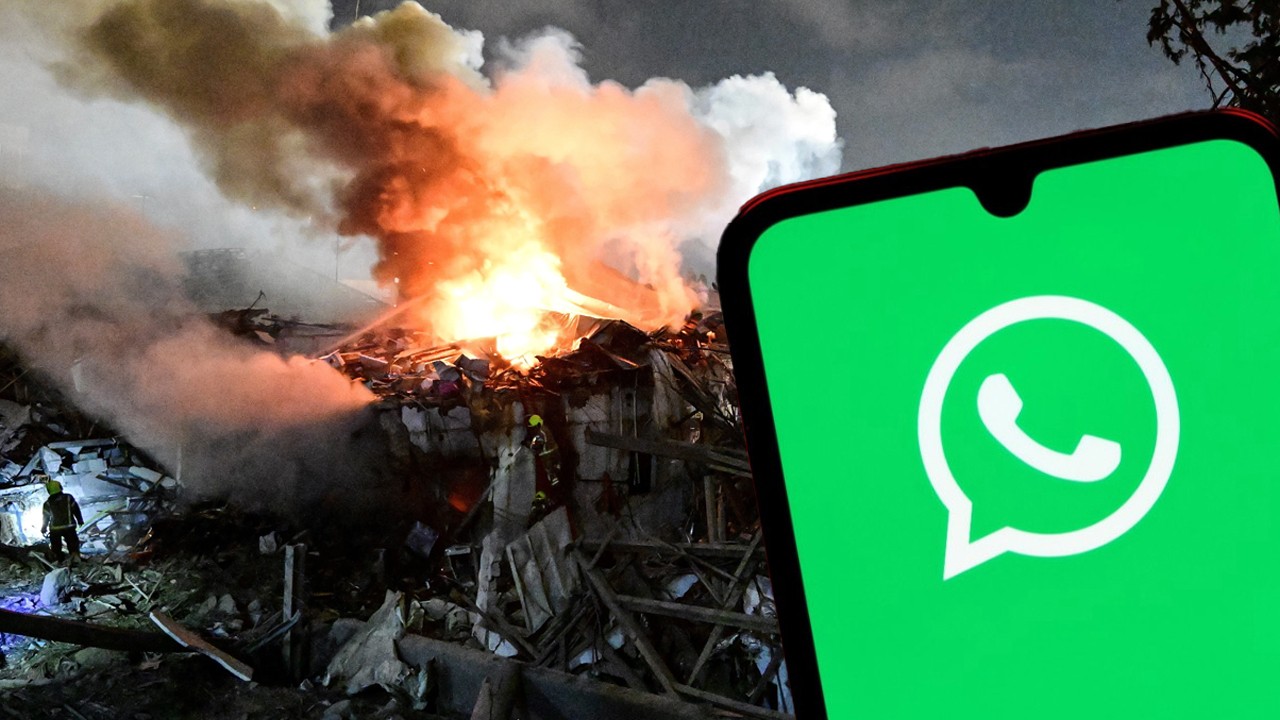
Head of Iran's Civil Defense Organization: "WhatsApp played (
https://t.me/IRANist1/11467 ) a role in determining the geolocation and killing of some Hamas commanders, such as Haniyeh."
Western media and experts believe that the possibility of penetration of Israeli malware and WhatsApp's cooperation with American intelligence agencies are the main factors in the insecurity of this American messenger.
I wonder in what terrorist attacks WhatsApp has already been used in Russia?
Of course, we will not ban it. Moreover, our officials and military are still actively using it. Apparently until the first large number of corpses associated with it.
https://colonelcassad.livejournal.com/9939106.html
Google Translator

